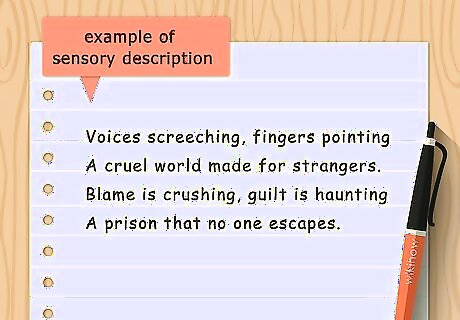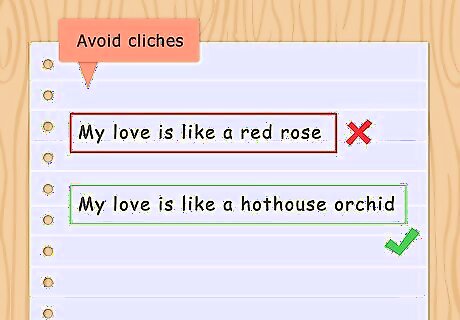
views
Brainstorming Ideas for the Love Poem

Describe your feelings about a particular person. Start by writing down any words or phrases that come to mind when you think about the person you are writing the poem for. Focus on nouns, verbs, and adjectives that come to mind when you think of your feelings for the person. For a love poem about your romantic partner, you may write, “sexy in the morning,” “greatest laugh in the world,” and “always optimistic in the face of adversity.”

Focus on a loving moment or experience. You can also approach the poem by focusing on a moment or experience with the person where you felt loving towards them. Maybe you have a great memory of seeing the person for the first time and falling for them. Or maybe you have a special experience that you shared with the person. For example, you may write about traveling with your partner and how you felt overwhelming love for them during that experience.

Read examples of love poems. To get a better sense of the genre, read love poems that are well known and considered good examples. Look for love poems in different forms, from sonnets to haikus to free verse. You may read: “Sonnet 40” by William Shakespeare “Flirtation” by Rita Dove “Having a Coke With You” by Frank O’Hara “Video Blues” by Mary Jo Salter “[love is more thicker than forget]” by e.e. cummings
Writing the Love Poem

Choose a form for the poem. Love poetry can be written in many different poetic forms. Some of the most popular include sonnet and free-verse. You can try writing a love haiku or an acrostic love poem. Pick a form that you feel suits the subject of the poem and your skills as a poet. You may also choose a form based on whether you want the poem to rhyme or have a very rigid structure. For example, for a love poem for a romantic partner, you may go for a traditional sonnet form.

Use sensory description. Focus on smell, taste, touch, sound, and feel when you write the poem. Use your senses to describe your feelings for the subject of the poem. Tap into sensory detail to discuss a shared moment with the person. For example, you may describe the sound of the glasses clinking on the table at the romantic restaurant where your partner proposed.

Include metaphor and simile. Metaphors and similes are a good way to add some creativity and detail to the love poem. Metaphors compare one thing to another thing. Similes are when you use “like” or “as” to compare one thing to another. For example, you may use a metaphor like, “My partner is a fierce tiger.” You can also use a simile like, “My partner is as bright as a peacock on a cold winter day.”

Avoid cliches. It can be easy to slip into cliches, especially when you are writing a love poem. Avoid phrases that are so familiar they have lost their meaning. If you feel as thought a phrase or sentence is too familiar, change it up and make it more particular to your perspective as a poet. For example, rather than use a cliche like “My love is like a red rose,” you may write, “My love is like a hothouse orchid” or “a prickly cactus.”

Use humor and wit. Make the poem light and funny to avoid being too sentimental or sappy. Try to include funny moments or lines that feel silly and fun. Keep the poem witty and humorous so the subject enjoys reading it. For example, you may include a line about how your partner makes funny faces when they are upset.
Polishing the Love Poem

Read the poem out loud. Once you have finished a draft of the poem, listen to how it sounds out loud. Read it slowly to yourself several times. Notice if there are any lines that seem awkward or unclear. Adjust any phrases that seem cliche or familiar. You should also look over the poem to make sure there are no spelling, grammar, or punctuation errors.

Show the poem to others. Get feedback from people you trust, such as a close friend, a family member, or a peer. Show the poem to people who know the subject well and ask them if they think the person will like it. Be willing to get feedback from them and listen to their constructive criticism. Then, revise the poem according to their feedback.

Present the poem in a loving, thoughtful way. Make the love poem extra special by handwriting it in a nice, handmade card. Or type it out and print it on nice paper to give to the person. You can also present the poem with a small gift to celebrate your love for the person.



















Comments
0 comment